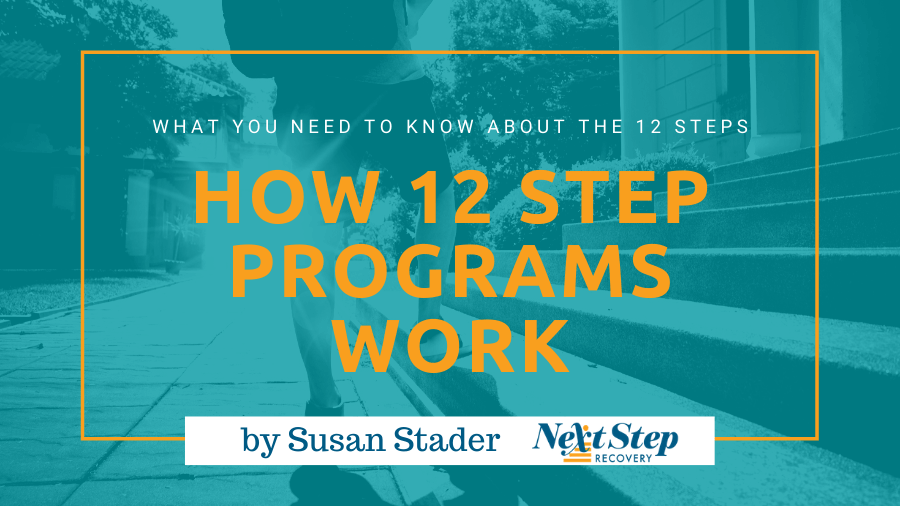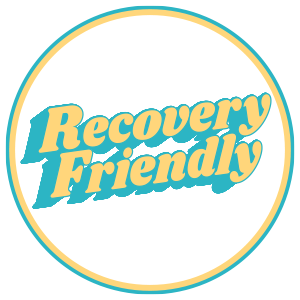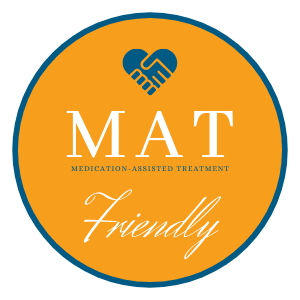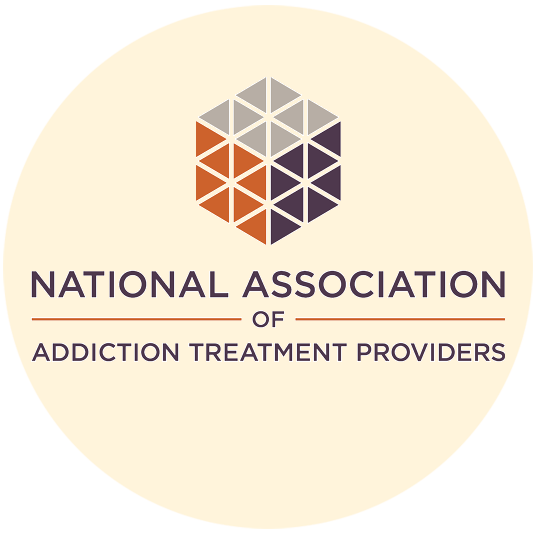The 12 Steps are a popular method for getting support in addiction recovery.
These steps were initially created to help alcoholics find sobriety. These concepts are now used to rehabilitate many types of addiction, including substance abuse disorders
However, be aware that the “steps” are only a small part of 12 step recovery programs.
The 12 recovery principles structure each member’s individual mindset. This is simply the groundwork to operate in tandem with additional group-focused guidelines.
At NSR of Asheville, we receive many questions about our 12 step recovery program.
Questions like:
 Step One can be understood as a stage of acceptance.
The most valuable phases of this First Step are:
Step One can be understood as a stage of acceptance.
The most valuable phases of this First Step are:
 Step Two represents a stage of hope for potential recovery.
Where the previous step may have spurred questions around being powerless to the addiction, the Second Step aims to show them a way forward.
Step Two uses an important term:
Step Two represents a stage of hope for potential recovery.
Where the previous step may have spurred questions around being powerless to the addiction, the Second Step aims to show them a way forward.
Step Two uses an important term:
 Step Three is identified as a stage of action.
Notable phrases in this step include:
Step Three is identified as a stage of action.
Notable phrases in this step include:
 Step Four could be viewed as a stage of honesty.
Key terms to focus on here are:
Step Four could be viewed as a stage of honesty.
Key terms to focus on here are:
 Step Five is focused on the act of confession.
Key terms to note here are:
Step Five is focused on the act of confession.
Key terms to note here are:
 Step Six is regarded as a stage of release.
Significant phrases include:
Step Six is regarded as a stage of release.
Significant phrases include:
 Step Seven connects with the idea of humility.
This acts as an extension of Step Three and Step Six, as now one knows specifics about their weaknesses.
Now that they know what to remove, they can allow their higher Power to assist.
Remaining humble keeps the recovering individual from downsizing the impact of behaviors. It also causes one to check the limits of their will over disease.
Most importantly, one is able to see the influence a greater force can have on addiction.
Step Seven connects with the idea of humility.
This acts as an extension of Step Three and Step Six, as now one knows specifics about their weaknesses.
Now that they know what to remove, they can allow their higher Power to assist.
Remaining humble keeps the recovering individual from downsizing the impact of behaviors. It also causes one to check the limits of their will over disease.
Most importantly, one is able to see the influence a greater force can have on addiction.
 Step Eight is like a moral inventory of one’s social damages.
Guilt management is vital to averting one’s destructive coping behaviors. As in Step Four, this is a form of assessing guilt for hurting others and taking action to admit it.
“Persons we had harmed” makes us accountable for the danger of an unmanaged addiction. Facing this truth gives the affected another chance for progress.
This external focus is a recurring theme in the 12 Steps. Making “amends” for social harm is focused on doing good outside of themselves. This replaces addictive behaviors that tend to be self-serving.
Eventually, one has less guilt and more motivation to improve the lives of others. Those in recovery can move forward “willing” to improve their social connections.
Step Eight is like a moral inventory of one’s social damages.
Guilt management is vital to averting one’s destructive coping behaviors. As in Step Four, this is a form of assessing guilt for hurting others and taking action to admit it.
“Persons we had harmed” makes us accountable for the danger of an unmanaged addiction. Facing this truth gives the affected another chance for progress.
This external focus is a recurring theme in the 12 Steps. Making “amends” for social harm is focused on doing good outside of themselves. This replaces addictive behaviors that tend to be self-serving.
Eventually, one has less guilt and more motivation to improve the lives of others. Those in recovery can move forward “willing” to improve their social connections.
 Step Nine drives an affected individual to take action to mend their social harms.
Two central themes apply here:
Step Nine drives an affected individual to take action to mend their social harms.
Two central themes apply here:
 Step Ten reinforces the moral inventory by maintaining one’s ethical compass.
The Fourth Step saw recovering persons take stock of past disease-triggering behavior. The Tenth aims to log current and future behaviors for more progress.
If one continues to view addiction as a disease, one can continue to minimize the risk of agitating it. As such, progress does not mean one is cured or in-control of disease.
“Admitting” imperfect moments reduces the illusion of control and the cycle of guilt.
Further, this type of admission to an external force keeps the affected accountable. Their higher Power and the fellowship of 12 Steps keep people focused on recovery.
Step Ten reinforces the moral inventory by maintaining one’s ethical compass.
The Fourth Step saw recovering persons take stock of past disease-triggering behavior. The Tenth aims to log current and future behaviors for more progress.
If one continues to view addiction as a disease, one can continue to minimize the risk of agitating it. As such, progress does not mean one is cured or in-control of disease.
“Admitting” imperfect moments reduces the illusion of control and the cycle of guilt.
Further, this type of admission to an external force keeps the affected accountable. Their higher Power and the fellowship of 12 Steps keep people focused on recovery.
 Step Eleven continues the trend of talking and listening to a higher Power.
These concepts are established in the following terms:
Step Eleven continues the trend of talking and listening to a higher Power.
These concepts are established in the following terms:
 Step Twelve aims to reinforce one’s internal lessons while externally guiding others.
These two themes capture the message:
Step Twelve aims to reinforce one’s internal lessons while externally guiding others.
These two themes capture the message:
 Know someone who could benefit from a proven pathway to lasting sobriety? Please like and share this post with them. Or, leave your questions or comments about the twelve steps below! We’re always looking for ways to keep the conversation about recovery going. Education is one of the most powerful tools we have to fight addiction.
Know someone who could benefit from a proven pathway to lasting sobriety? Please like and share this post with them. Or, leave your questions or comments about the twelve steps below! We’re always looking for ways to keep the conversation about recovery going. Education is one of the most powerful tools we have to fight addiction.
- How do the 12 steps work?
- Are 12 Step programs religious?
- What are each of the 12 Steps?
- Should I choose a 12 step program?
What are the 12 Steps?
The 12 Steps are a set of principles developed to help individuals struggling with addiction change their beliefs. Together, they act as a framework for sustainable recovery. What’s more, 12 Step communities of all types help provide the support and accountability many recovering addicts crave. The 12 Steps of recovery were designed as the foundation for individual recovery. They serve as guidelines for individuals on their journey back from addiction. Many have heard of “12 Steps for Drug & Alcohol”. However, the Steps are used in everything from sex addiction to overeating. The language of the original steps is modified slightly for different programs. Yet the core message remains the same. Today, the original 12 Steps of Alcoholics Anonymous has helped countless men and women make sobriety sustainable across the globe.How the 12 Steps Works
Like any solid plan, every part has its purpose. The 12 Steps are intended to be followed in sequence and in their entirety. You may not like all of them. Some will be more challenging than others. But they are all crucial in your long term success. Each step represents a unique challenge. Tackle them at your own pace with the support of a sponsor. Group therapy and 12 step support groups can also help—whether you need accountability, fellowship, or simply a listening ear. Just remember, there are twelve steps for a reason.Step 1
 Step One can be understood as a stage of acceptance.
The most valuable phases of this First Step are:
Step One can be understood as a stage of acceptance.
The most valuable phases of this First Step are:
- “Powerless”
- “Unmanageable”
“We admitted we were powerless over alcohol—that our lives had become unmanageable.”
Step 2
 Step Two represents a stage of hope for potential recovery.
Where the previous step may have spurred questions around being powerless to the addiction, the Second Step aims to show them a way forward.
Step Two uses an important term:
Step Two represents a stage of hope for potential recovery.
Where the previous step may have spurred questions around being powerless to the addiction, the Second Step aims to show them a way forward.
Step Two uses an important term:
- “Higher Power”
“Came to believe that a Power greater than ourselves could restore us to sanity.”
Step 3
 Step Three is identified as a stage of action.
Notable phrases in this step include:
Step Three is identified as a stage of action.
Notable phrases in this step include:
- “Turn our will [over]”
- “God as we understood Him”
“Made a decision to turn our will and our lives over to the care of God as we understood Him.”
Step 4
 Step Four could be viewed as a stage of honesty.
Key terms to focus on here are:
Step Four could be viewed as a stage of honesty.
Key terms to focus on here are:
- “Fearless”
- “Moral inventory of ourselves”
“Made a searching and fearless moral inventory of ourselves.”
Step 5
 Step Five is focused on the act of confession.
Key terms to note here are:
Step Five is focused on the act of confession.
Key terms to note here are:
- “Admitted… our wrongs”
- “To God”
- “To ourselves”
- “To another human being”
“Admitted to God, to ourselves, and to another human being the exact nature of our wrongs.”
Step 6
 Step Six is regarded as a stage of release.
Significant phrases include:
Step Six is regarded as a stage of release.
Significant phrases include:
- “Have God remove”
- “Defects of character”
“Were entirely ready to have God remove all these defects of character.”
Step 7
 Step Seven connects with the idea of humility.
This acts as an extension of Step Three and Step Six, as now one knows specifics about their weaknesses.
Now that they know what to remove, they can allow their higher Power to assist.
Remaining humble keeps the recovering individual from downsizing the impact of behaviors. It also causes one to check the limits of their will over disease.
Most importantly, one is able to see the influence a greater force can have on addiction.
Step Seven connects with the idea of humility.
This acts as an extension of Step Three and Step Six, as now one knows specifics about their weaknesses.
Now that they know what to remove, they can allow their higher Power to assist.
Remaining humble keeps the recovering individual from downsizing the impact of behaviors. It also causes one to check the limits of their will over disease.
Most importantly, one is able to see the influence a greater force can have on addiction.
“Humbly asked Him to remove our shortcomings.”
Step 8
 Step Eight is like a moral inventory of one’s social damages.
Guilt management is vital to averting one’s destructive coping behaviors. As in Step Four, this is a form of assessing guilt for hurting others and taking action to admit it.
“Persons we had harmed” makes us accountable for the danger of an unmanaged addiction. Facing this truth gives the affected another chance for progress.
This external focus is a recurring theme in the 12 Steps. Making “amends” for social harm is focused on doing good outside of themselves. This replaces addictive behaviors that tend to be self-serving.
Eventually, one has less guilt and more motivation to improve the lives of others. Those in recovery can move forward “willing” to improve their social connections.
Step Eight is like a moral inventory of one’s social damages.
Guilt management is vital to averting one’s destructive coping behaviors. As in Step Four, this is a form of assessing guilt for hurting others and taking action to admit it.
“Persons we had harmed” makes us accountable for the danger of an unmanaged addiction. Facing this truth gives the affected another chance for progress.
This external focus is a recurring theme in the 12 Steps. Making “amends” for social harm is focused on doing good outside of themselves. This replaces addictive behaviors that tend to be self-serving.
Eventually, one has less guilt and more motivation to improve the lives of others. Those in recovery can move forward “willing” to improve their social connections.
“Made a list of all persons we had harmed, and became willing to make amends to them all.”
Step 9
 Step Nine drives an affected individual to take action to mend their social harms.
Two central themes apply here:
Step Nine drives an affected individual to take action to mend their social harms.
Two central themes apply here:
- “Made direct amends”
- “Wherever possible”
“Made direct amends to such people wherever possible, except when to do so would injure them or others.”
Step 10
 Step Ten reinforces the moral inventory by maintaining one’s ethical compass.
The Fourth Step saw recovering persons take stock of past disease-triggering behavior. The Tenth aims to log current and future behaviors for more progress.
If one continues to view addiction as a disease, one can continue to minimize the risk of agitating it. As such, progress does not mean one is cured or in-control of disease.
“Admitting” imperfect moments reduces the illusion of control and the cycle of guilt.
Further, this type of admission to an external force keeps the affected accountable. Their higher Power and the fellowship of 12 Steps keep people focused on recovery.
Step Ten reinforces the moral inventory by maintaining one’s ethical compass.
The Fourth Step saw recovering persons take stock of past disease-triggering behavior. The Tenth aims to log current and future behaviors for more progress.
If one continues to view addiction as a disease, one can continue to minimize the risk of agitating it. As such, progress does not mean one is cured or in-control of disease.
“Admitting” imperfect moments reduces the illusion of control and the cycle of guilt.
Further, this type of admission to an external force keeps the affected accountable. Their higher Power and the fellowship of 12 Steps keep people focused on recovery.
“Continued to take personal inventory and when we were wrong promptly admitted it.”
Step 11
 Step Eleven continues the trend of talking and listening to a higher Power.
These concepts are established in the following terms:
Step Eleven continues the trend of talking and listening to a higher Power.
These concepts are established in the following terms:
- “Prayer”
- “Meditation”
- “Conscious contact”
“Sought through prayer and meditation to improve our conscious contact with God as we understood Him, praying only for knowledge of His will for us and the power to carry that out.”
Step 12
 Step Twelve aims to reinforce one’s internal lessons while externally guiding others.
These two themes capture the message:
Step Twelve aims to reinforce one’s internal lessons while externally guiding others.
These two themes capture the message:
- “Carry this message to alcoholics”
- “Practice these principles in all our affairs”
“Having had a spiritual awakening as the result of these steps, we tried to carry this message to alcoholics, and to practice these principles in all our affairs.”
Takeaways
By now, you should have a better awareness of how the 12 steps of recovery work. To recap, you now know:- The 12 Step program is the framework for many addiction support groups.
- The 12 Steps are not religious today, despite using the language of its religious origins.
- Each of the Twelve Steps focuses on unique aspects. These can be accountability, behavioral control, fellowship, and life purpose.
- The 12 Steps of recovery are free and open to anyone with a serious commitment to recovery.
 Know someone who could benefit from a proven pathway to lasting sobriety? Please like and share this post with them. Or, leave your questions or comments about the twelve steps below! We’re always looking for ways to keep the conversation about recovery going. Education is one of the most powerful tools we have to fight addiction.
Know someone who could benefit from a proven pathway to lasting sobriety? Please like and share this post with them. Or, leave your questions or comments about the twelve steps below! We’re always looking for ways to keep the conversation about recovery going. Education is one of the most powerful tools we have to fight addiction. 






